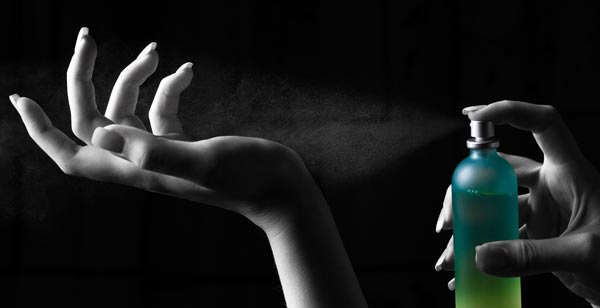
Perfume being sprayed onto a wrist [Image: Thinkstock]
Humans have a relatively poorly developed sense of smell compared with many other animals, especially insects. Perfumers think of a complete perfume as a balanced sequence of 'notes'.
The critical feature seems to be volatility. The 'top notes' are the most volatile, and they are the immediately noticeable citrus and herb-like scents.
The main effect of a perfume depends on the floral-scented 'middle note', with the less volatile woody, musky 'end notes' providing a long-lasting base, which evaporates only slowly.
A specific odour response depends on the interaction of molecules of a volatile compound with a receptor. Matching geometry between molecule and receptor seems to be critical.
Some common chemicals used in perfumery are undecanal, citral, limonene, menthol, linalool, carvone, citronellol and vanillin.
One of the early chemicals used in perfumes was civetone, which is derived from civet, the soft, fatty scent secretion of the civet cat (Viverra civetta).
The musk deer (Moschus moschiferus) of central Asia secretes a viscous brown liquid from a gland in its abdomen, which contains a small amount of the ketone muskone, a ring-like molecule that resembles civetone and creates the odour we know as musk. Both of these chemicals are nowadays produced synthetically.
Find out more
You can learn how the senses interact with the environment in The Open University course Signals and Perception: The Science of the Senses.
Rate and Review
Rate this article
Review this article
Log into OpenLearn to leave reviews and join in the conversation.
Article reviews
You can learn the role of (LINK removed by OpenLearn Moderator) natural attars and essential oils in perfume making